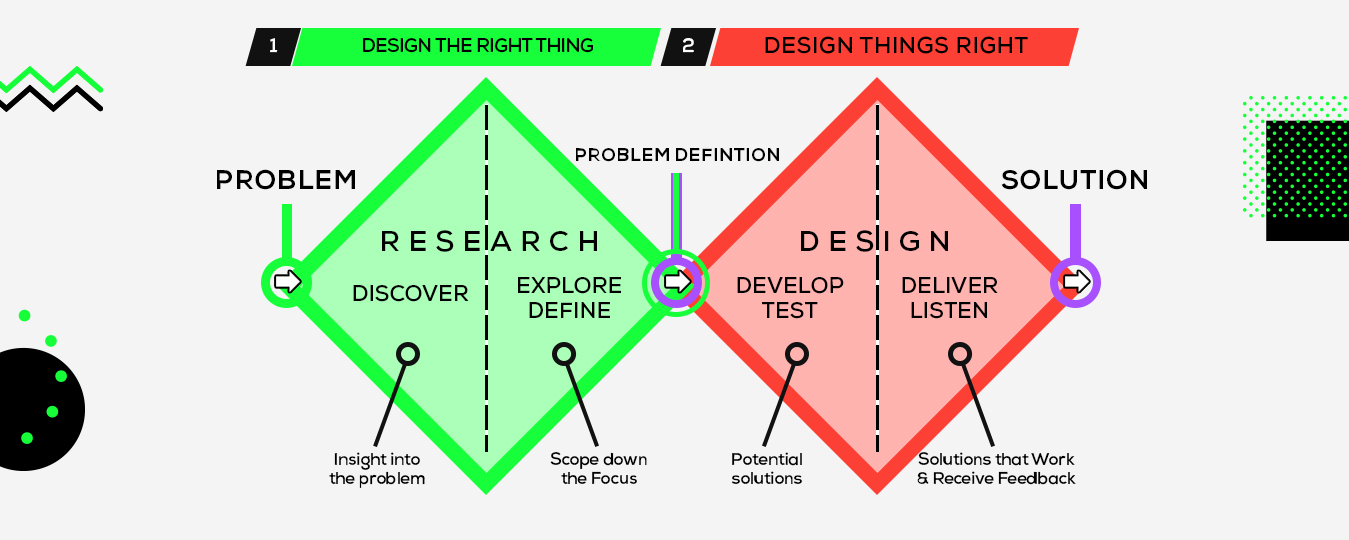Are you tired of surface level solutions & want to make designs that truly meet the user needs? This blog will show you how to use the Double Diamond Model process to tackle complex problems & achieve real world impact.
As a UX/UI designer, you may have encountered numerous occasions wherein you are unable to converge your market research into a streamlined solution, or where you simply find the most befitting design solution only after you have put in a considerable amount of time and effort in some other idea, and it is too late to incorporate your new solution! Understandably, all of these drawbacks can hinder your design process, and delay your projects.
Even worse, they can lead to unhappy clients and end-users, making the path more than just challenging for you😤!
Thankfully, there is a way out! Yes, you guessed it right. It is the Double Diamond Model! Essentially designed to assist in the generation of new and path-breaking ideas, this technique enables designers to put these ideas and their execution in a chronological manner, such that they are never required to take any steps back.
Now that we have shone some light on the Double Diamond Model, let us understand, what it actually is and what it entails! And more importantly how you can implement the same in your design process.
What is the Double Diamond Model? 💎
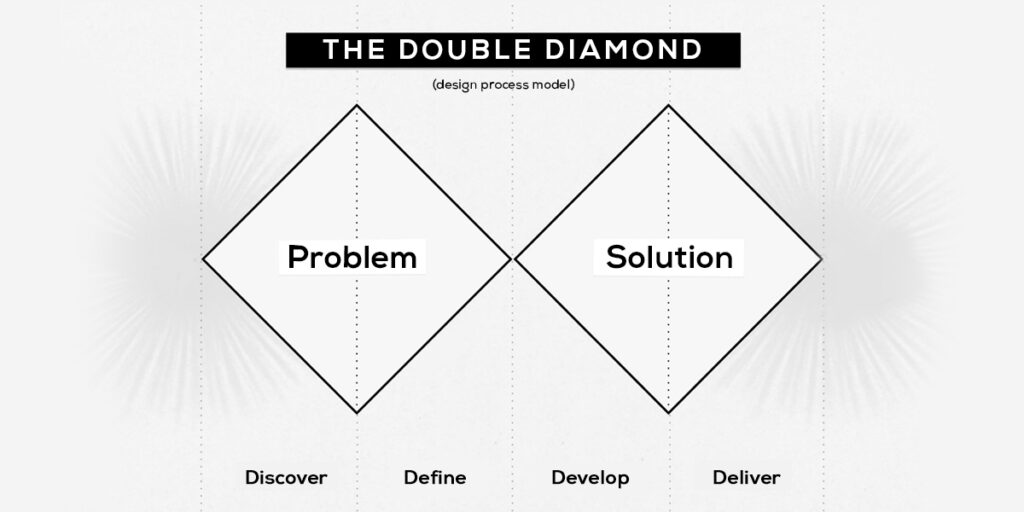
Invented by the British Design Council in the year 2005, the Double Diamond is fast catching up as one of the most reliable processes for creative heads as it gives them a much needed road map. The model was derived after gathering extensive data from the design teams of as many as 11 global companies. Hence, this model is truly reliable!
As the name suggests, the Double Diamond Model revolves around two diamond shapes present adjacent to each other. It comprises of 4 key stages – Discover, Define, Develop and Deliver. Each of these stages are further characterised by divergent or convergent thinking.
As you may have guessed, the double diamond design technique suggests that the best ideas must be discovered first, followed by a frequentative creative process wherein the ideas are developed and tried and tested numerous times in a bid to drop any weak ones out, and move forth with the strongest, most pertinent ideas.
When Should a Design Team Use the Double Diamond Technique & Thinking?

More often than not, a creative design process is rather complex with little to no straightforward approaches. Fortunately, the double diamond is a tool that can enable the simplification of the design process, making it within the reach of both amateur as well as professional designers.
The Double Diamond Technique can be used by design teams across the board, including but not limited to processes such as –
- Product Development
- Journey Mapping
- Persona Profiling
- Website Development
Applications of the Double Diamond Technique
Some of the most prominent applications of the Double Diamond Technique include –
- The initial assessment of a new project
- The solution to the problem presented by a specific project
- The decision making pertaining to the approach for a project or a group of projects
- The strategy and management of a design project
- The understanding of the current as well as future stages of a design project
- The shaping of the project research
According to Harvard Business Review, Companies that embrace design thinking have 1.5 times higher market share and customer satisfaction ratings.
Implementation of the Double Diamond Design Process Model
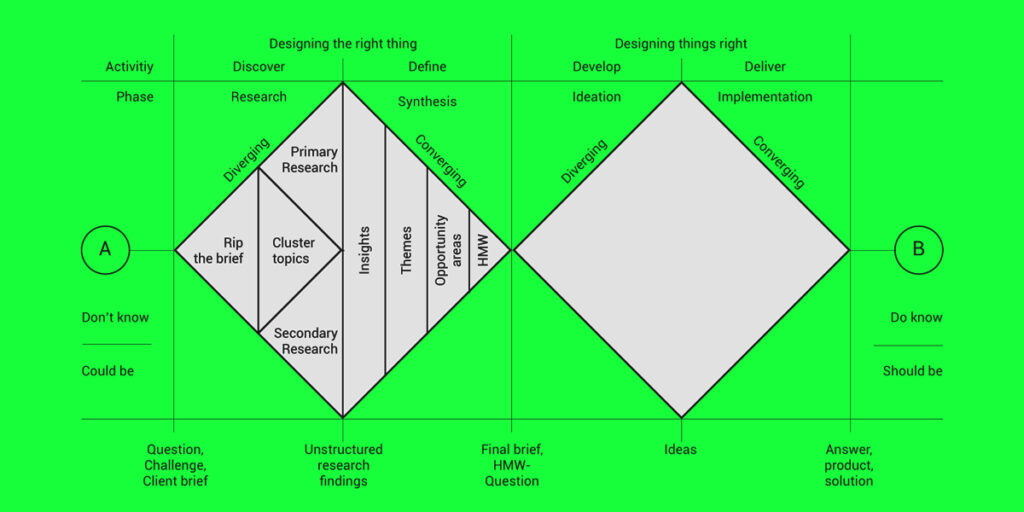
One of the primary tasks that you need to undertake in order to execute the double diamond is the creation of a template – that not only helps you curate the solution to the problem at hand, but also helps you stay on the preset. As discussed earlier, there are 4 stages in the double diamond design model. We will discuss the implementation of each of these stages, while also suggesting you some of the most promising tools that will assist you in making the most of the double diamond design process.

Stage 1 of the Double Diamond Design Process – Discover
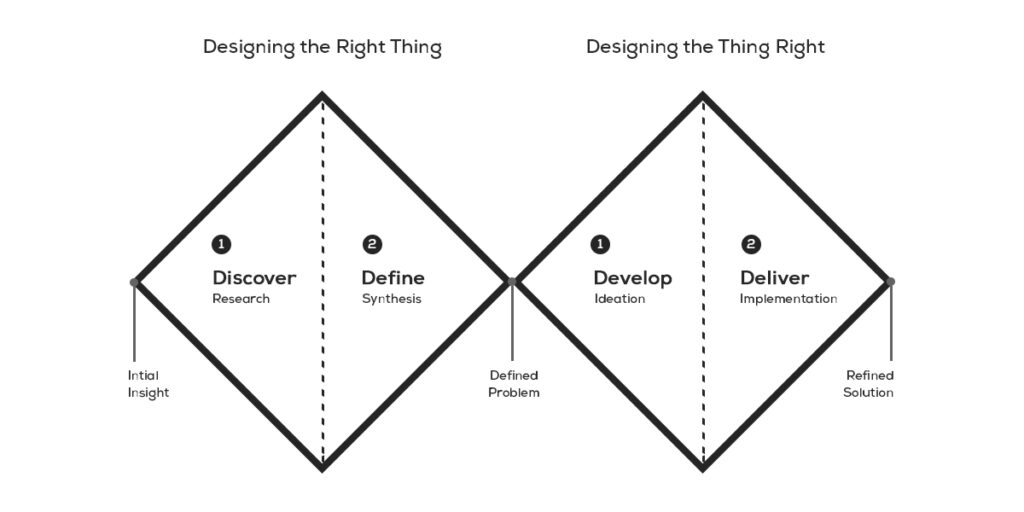
This stage of the problem space is all about exploration – not just in terms of the design, but also with respect to the target audience that the design will be directed at, and with respect to the problem that the design is supposed to provide a solution for. Simply put, at this stage the team ought to collect as much information about the challenge as possible, and examine the same.
The ‘Discover’ stage is Divergent, thereby implying that any and every idea and information should be given due diligence. Some of the tools that can prove to be of help in this stage include –
Mind Mapping

This involves coming up with a central theme and then expanding on the same through various related ideas. Once all the ideas can be seen visually, it becomes easier to connect the dots and find a way that can best help find the solution for the problem at hand.
Multi-Perspective Problem Framing (MPPF)
As the name suggests, this tool focuses on multiple cornerstones, largely six, in a bid to understand the problem. In a way, MPPF can be said to be an extended version of Mind Mapping.
Brainstorming and Reversed Brainstorming
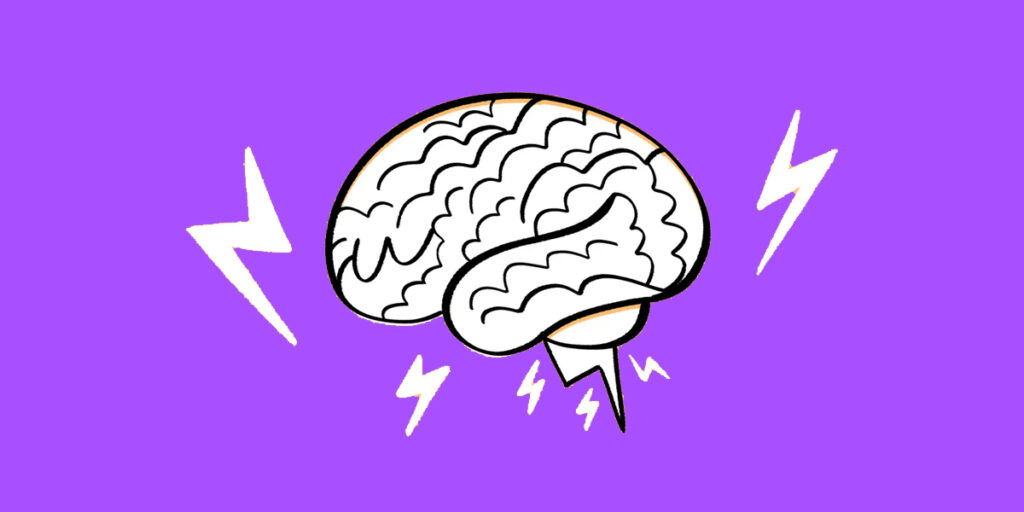
while brainstorming is all about coming up with ideas and solutions for a problem at hand, reverse brainstorming focusses on the problems – so much so that the in-depth understanding of the problems can help unravel underlying opportunities. A combination of both these approaches often results in promising solutions.
On Ground Research

Also known as Field Research, the focus here is to explore the problem and the potential solutions through methods such as interviews, questionnaires, focus groups, etc.
Off Ground Research
In this case, the problem is explored from within the walls of the workplace, by using the knowledge gained from online and offline resources such as publications, case studies, expert opinions etc. This is also known as Desk Research.
Field research
The field research (primary research) has different methods that can be used to explore the problem, such as interviews, focus groups, and observation. It is believed that a one on one meeting with the target audience, whether structured on not can help gain some valuable insights. Moreover, it gives a chance to the interviewer to extend the conversations based on the replies in order to maximise the value gained. Focus groups prove to be ideal when the time and money allotted for the research is minimal. Yet another cost-effective measure for field research is observation, wherein ome can simply observe the target audience and understand when, where and how they encounter the problem. The observations can then be analysed at a later stage by the entire creative team and a potential solution can be worked upon.
Consumer Journey Mapping
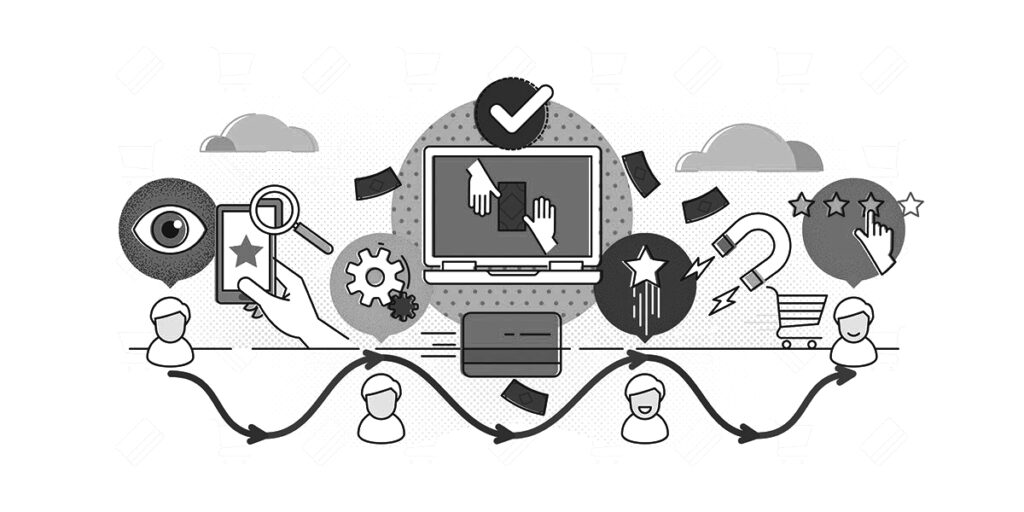
As the name indicates, this tool involves the observation of the consumer’s journey while using the product or service. The design team can make the requisite observations, take notes and then work towards problem solving.
Stage 2 of the Double Diamond Design Process – Define
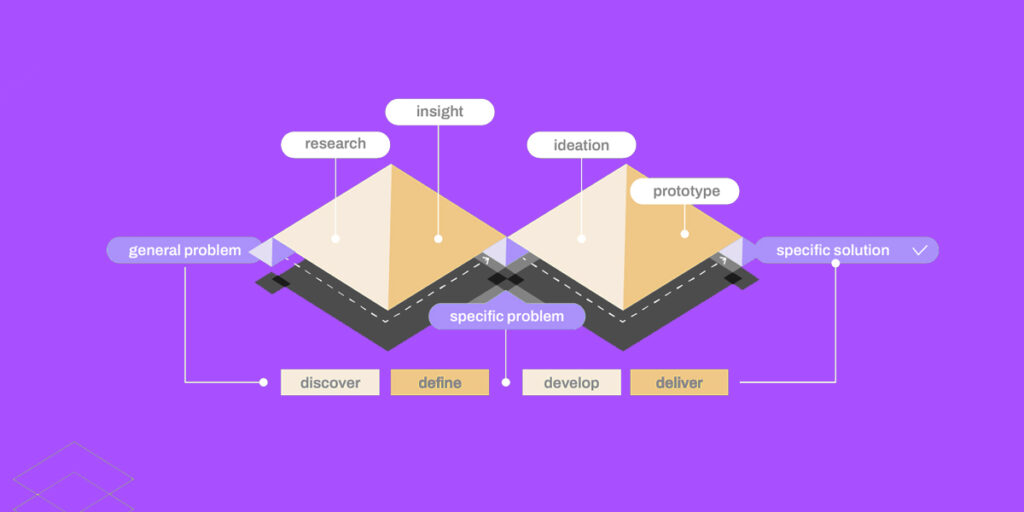
In this stage of the problem space, the double diamond becomes convergent, thereby suggesting that the problem be defined in a clear and concise manner. It is this definition of the problem that will become the north star for the design team, and guide it when it comes to creating prototypes and testing solutions. Some of the tools that have proven to be useful for this stage include –
Root Cause Analysis
This tool also goes by the names of Ishikawa Diagram as well as Fish Bone Analysis. Here, one simply needs to analyse the data collected while understanding the issue at hand, so that they can narrow down to the root cause, and then work towards finding a fitting solution. The tool relies in six aspects that can almost always be indicative of the root cause. These aspects are –
- Measurements
- Materials
- Personnel
- Environment
- Methods
- Machines
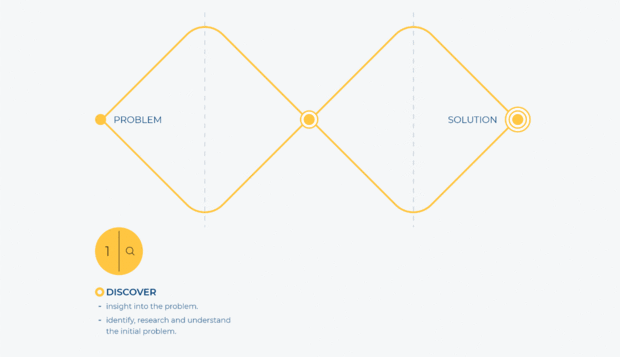
5 Whys
This is a tool, wherein the team is required to ask ‘Why’ with respect to the problem, get an answer and ask the ‘Why’ again. In this fashion, when the ‘Why’ has been asked for 5 times, it is believed that the root cause becomes evident.
User story
Simple as the name, the tool is all about gaining an understanding of the target user’s needs, demands and preferences. That being accounted for, the cause of the problem becomes more than just apparent.
Affinity diagrams
Also known as the organised form of brainstorming, affinity diagram is essentially a tool which helps generate, organize, and consolidate information pertaining to the problem at hand.
Stage 3 of the Double Diamond Design Process – Develop
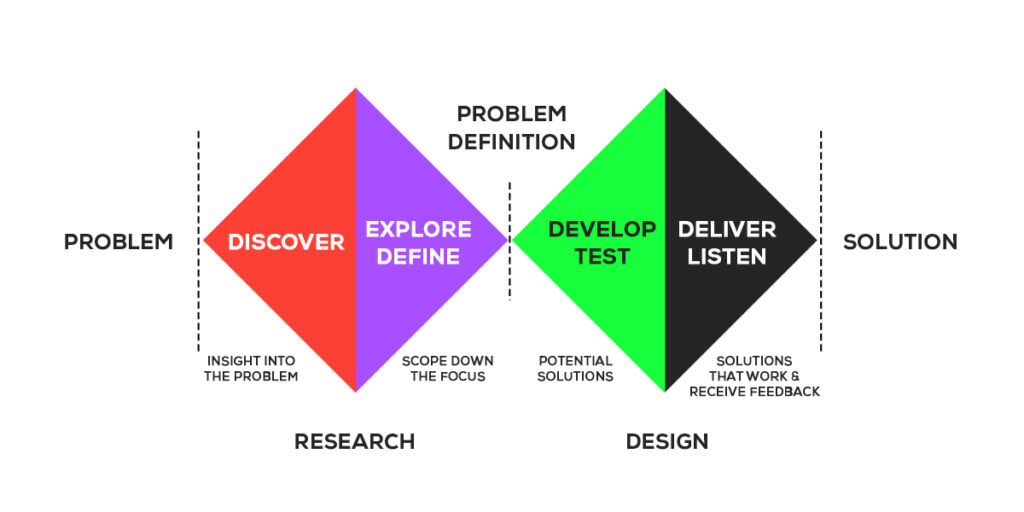
This is the first stage in the solution space, wherein the design team is required to develop a prototype of the solution. Again, this stage falls under the divergent category, thereby implying that all possible prototypes are tested as viable solutions. Not only can this step ensure the greatest chance for the best outcome to win from a design perspective, but also help the end-users with a solution that is both – pragmatic and functional.
Some of the tools that can help facilitate this process include –
Minimum Viable Product (MVP)
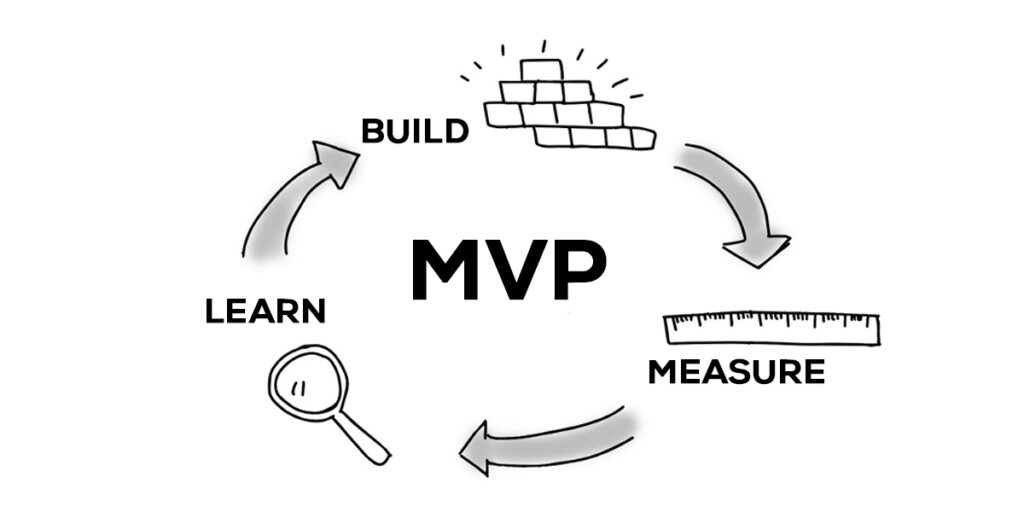
An important step in product development is the making of the MVP, which is a limited version of the actual intended product. The MVP helps the developers as well as the users to experience the product or service first hand, and give feedbacks regarding the same. These reviews can then be used for the betterment of the product/service.
In case the product is a physical one, Rapid Protypeing (3D Printing) can also be used to create a virtual yet tangible example of the product.
Consumer Journey Mapping
As discussed earlier, this tool involves the observation of the consumer’s journey while using the product or service. The design team can make the requisite observations, take notes and then work towards bringing in the necessary improvements in the final version.
Stage 4 of the Double Diamond Design Process – Deliver
After the development of the final product as per the observations and insights gained over the 2nd and 3rd stages of the double diamond model, the creative team works towards delivering the same. However, the onus of the designer doesn’t end there. Once the actual product or service enters the market, the developers wait for a more extensive feedback, and then narrow down their approach to deliver a product that best meets the needs and preferences of the end users.
Some of the tools that prove to be helpful in this step include:
Surveys
A simple survey asking the users their thoughts and opinions about the product can help generate valuable insights, which can then be put to good use.
Verbal Description
This tool encourages the consumers to describe their experience verbally while using the product. Recordings of these descriptions can help designers understand the consumer isngits in a much clearer way.
In this tool, the consumer uses the product while describing the experience loudly. The designers take notes or recording of the consumer experience.
We hope that you now feel truly equipped to implement the double diamond technique, through a thorough understanding of the problem space. While the process may seem to be daunting at first, you will surely understand its significance in the long run.
After all, it isn’t without some compelling reasons that the Double Diamond model has become a foundation in the design process for hundreds and thousands of independent designers and design agencies across the globe.
By embracing the Double Diamond Model, organizations can move beyond surface-level solutions and create meaningful, user-centered designs.
Creative Bloq
FAQs For Diamond Model Process
Who uses Double Diamond design process?
The Double Diamond design process is a framework that is used by designers to approach problems in a systematic way. This process is often used in fields such as product design, engineering, and user experience design. The Double Diamond process helps designers to understand the problem, come up with creative solutions, and then refine those solutions to create a final product or service that meets the needs of the user.
How do I create a map in consumer journey?
Creating a map of the consumer journey requires observation, and noting down users’ experiences. Implementing the necessary strategies could further improve the customers’ journey as well as the designs.
What are the 4 phases of the Double Diamond of design?
The 4 phases of double diamond designs are to Discover, Define, Develop, and Deliver.
